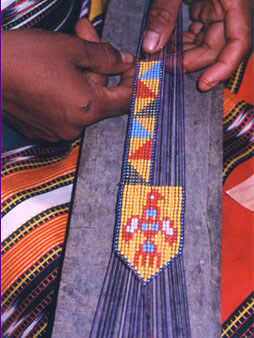|
|
|||||||
|
|||||||
|
|
La Chunga (Straw Baskets)Inside the tropical jungle of Panama, there are many plants and trees. One of the most important to mention is the chunga palm, or in the Embera dialect “jiwa”. It is a palm that grows very tall and has a lot of spines. The chunga is widely used for its leaves and also its trunk, which serves as a post in a traditional Embera house. Embera women, as a legacy of their ancestors, have learned to weave beautiful baskets from the fibers of the leaves. How to obtain and work with the chunga fibers: First the heart of the chunga plant is cut and gathered. Then, the Embera ladies bring the leaf home and put it in water so that it doesn’t dry out in the sun. One leaf has four fibers. After obtaining all of the fibers, the chunga is cooked to get rid of the natural green color. After cooking, the leaves are put in the sun to that they dry. The ladies leave them overnight so that they become white with the dew of the open air. Then they can create many different colors. The color red comes from achiote (Bixa orellana), the yellow from yuquilla (Schefflera gleasonii), and the black from the cocobolo wood and black earth. All of these colors are made by cooking the fibers with the material. These colors are not erased and do not stain. After having all of the fibers, the ladies begin to weave. A basket can take anywhere from 3 to 60 days, dedicating 6 to 8 hours daily. The quality is determined by the weave. Baskets of good quality take much longer, are finer and stronger. Baskets of medium quality have a weave that is not quite as fine. WRITTEN BY NELDO TOCAMO
Cocobolo (Wood Carvings)Cocobolo, a wood that comes from a tropical tree, is very important for the Embera people. The cocobolo carvings are made very delicately. The shape is inspired my many different species of animals. It is common to see works of birds, forest animals and canes. All of the work is done manually . Children of 7 years of age to adults dedicate themselves to cocobolo carving. The cocobolo tree grows in the tropics of Panama. It can grow as tall as approximately 30 meters. It is a very strong wood and resistant to termites. It is also used to make drums or to make a post in a traditional Embera house. An ax is used to cut the tree. A piece of cocobolo wood, before finishing, can weight 1 kilogram. After finishing, it normally weighs ½ pound. To do the finishing of the wood, Embera men use sandpaper of different varieties to give it its nice sheen. The wood has a nice, natural shine to it. A cocobolo carving often passes from generation to generation of a family. The cocobolo wood scraps are very useful to the Embera women for their color, which can be used to dye chunga fibers. Cocobolo can be black, yellow or black striped. WRITTEN BY JOHNSON MENGUISAMA
Tagua (Vegetable Ivory)
The vegetable ivory tree can be found in the canal area of Panama. There are 3 parts: the shell, which is the outside covering of the ivory, and inside it can have anywhere from 6 to 12 fruits, depending upon the size. When the ivory is new, the part inside is edible. In the first growing stage it has water, and it is drinkable. The second growing stage is similar to that of coconut. After it hardens, one can begin to work and carve in it. The ivory can be collected after a few years. The fruits fall and are collected in baskets by Embera people.
The natural color of the ivory is white, but it can be painted. To make the different colors, the carver will buy paint in Panama City. |
|
|||||
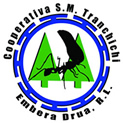
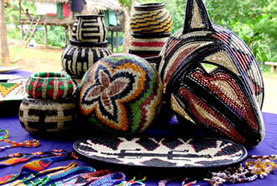
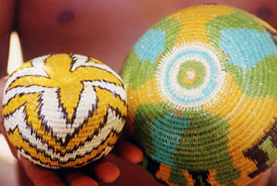
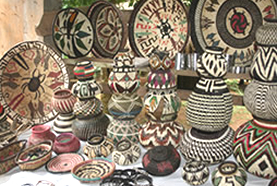
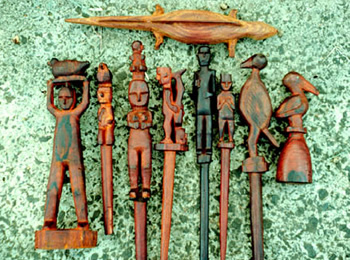
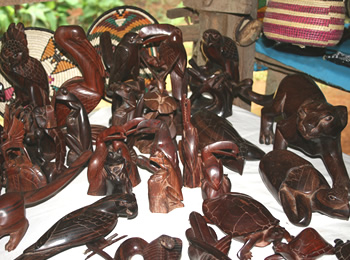
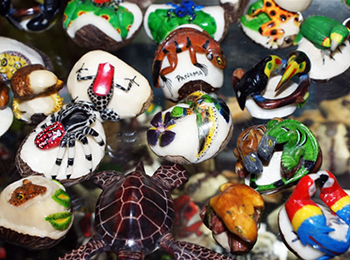 Tagua (vegetable ivory) comes from a palm that grows approximately 8 feet tall. In the year 1946, the ivory was used to make and export buttons.
Tagua (vegetable ivory) comes from a palm that grows approximately 8 feet tall. In the year 1946, the ivory was used to make and export buttons.